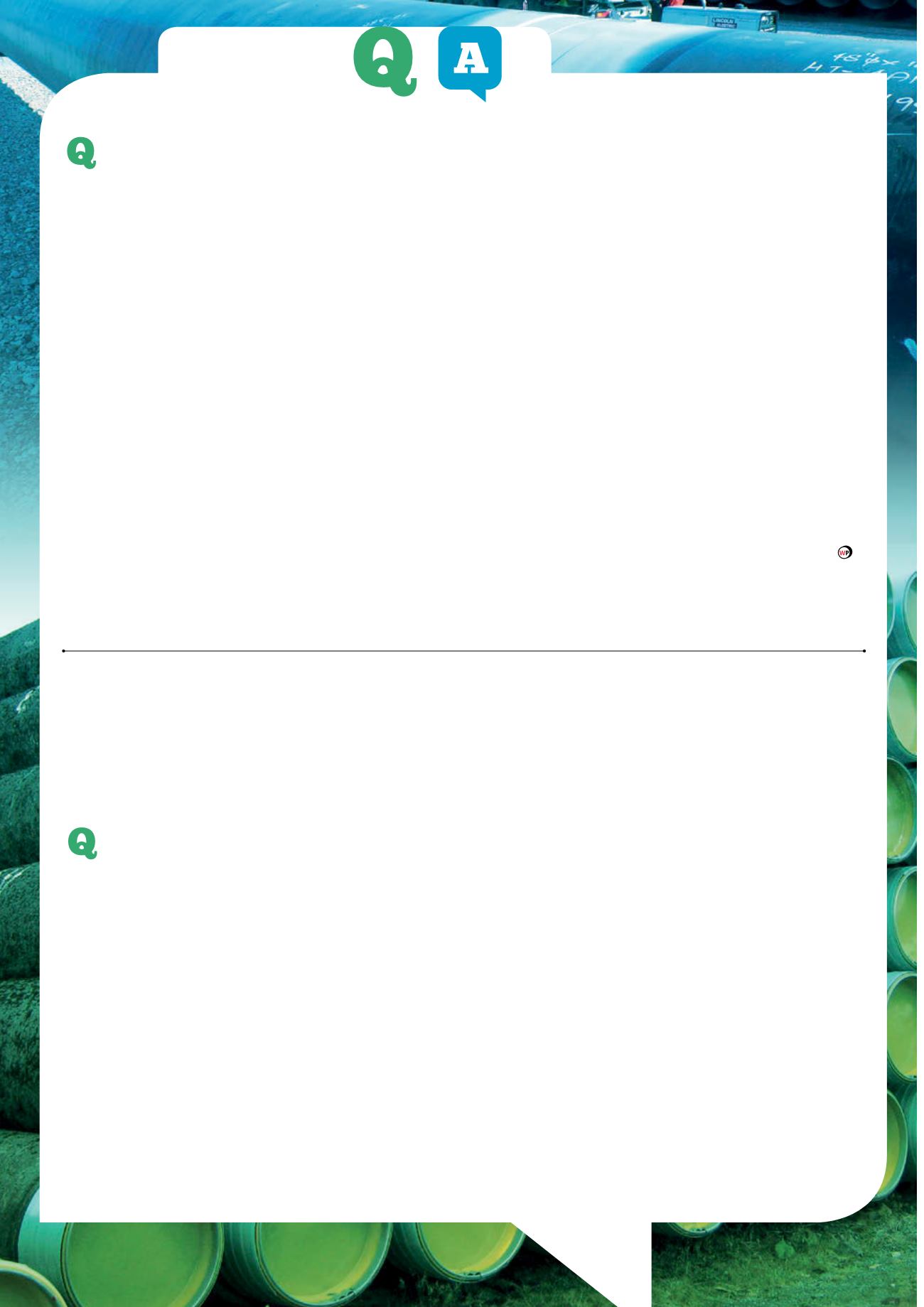
Coatings
&
Biggest challenge to the pipeline coatings
industry in 2016
The selection of a suitable pipeline repair/replacement
coating is from a technical point of view the major decision
to be made for a rehabilitation project. Rehabilitation seeks to
re-establish coating efficacy to its original state. This does not
mean that the same coating must be used for rehabilitation;
often more state-of-the-art coatings are employed. The
problem is that there are a wide variety of coating systems
that have been used with varying degrees of success as
pipeline coatings. A closer examination of many of these
systems reveals very few have been subject to exhaustive
testing to ensure the coating is fit for purpose.
In order to specify the requirements of a protective coating
and ensure correct testing, it is useful to understand their
major failure mechanisms. Current thinking on the mechanism
of failure of thin film liquid applied coating (epoxy) requires
different coating parameters to those used for example in
evaluating tapes. With thin film coatings, the penetration of
water and subsequent osmotic pressures developed will result
in many small canals creating further water uptake. Eventually
the thin film coating becomes transparent to moisture and
becomes a semi-permeable membrane, which under the
influence of CP draws water through the coating to collect at
the steel coating interface as a blister that eventually bursts
and allows further undermining of the coating.
Coating failure is accelerated by increasing temperature.
This failure mechanism is not applicable to tape coatings. A
coating used for the rehabilitation of a pipeline must fulfil the
following requirements:
)
The most important and fundamental requirement of a
coating is that it must separate the pipe from the moist
soil. To do this the coating must have a high resistance to
permeability/water uptake.
)
The coating must have a good bonding to the steel pipe
to prevent moisture ingress and to resist soil stresses. This
is very dependent upon surface cleanliness and profile
prior to coating application.
)
The coating must be capable of being applied in the ditch
under the prevailing environmental conditions.
)
The coating must be capable of being repaired and to
withstand holidays over time.
)
The coating or supporting techniques must be available
to cover the repair of the overlap areas onto the parent
coating.
)
The coating must be tolerant to alkali generated by CP.
Note
Frits Doddema is writing on behalf of Seal For Life, Stopaq, Anodeflex, Covalence,
Polyken and Powercrete.
Nicholas Hee, Rick Kimpel and
Tim Kenworthy, Aegion Coating
Services, USA
The biggest threat to the integrity of
pipeline coatings (in the plant and/or in
the field)
Improper coating application at the field joint area – a
pipeline’s potential weakest link – is one of the biggest threats
to the integrity of pipeline coatings. Whether applying an
anti-corrosion coating to the outside diameter field joint,
inside diameter field joint or both, the integrity of the girth
weld is greatly affected by surface preparation practices
and application of the coating itself. The key to successfully
coating field joints is establishing a consistent, repeatable and
environmentally friendly process utilising automated robotic
technology. New advances in robotic coating application
equipment minimise the risk of human/operator error and
offer electronic traceability, repeatability and consistent
quality throughout the duration of a project, whether it is a
cross-country land transmission line stretching for hundreds of
miles or a subsea infield pipeline.
Among the many anti-corrosion coating options available
for outside diameter field joints, liquid coating application has
become an increasingly viable and effective option. Plural-
component liquid coatings (generally epoxy or polyurethane
formulations) to field joints can be either hand-applied using a
brush or spray or applied using automated robotic equipment.
Per most major coating manufacturer recommendations,
a surface profile of SA 2.5 standard (near-white finish) is
required during surface preparation of the pipeline steel
surface. Aegion Coating Services offers automated robotic
coating technology that quickly and efficiently applies
epoxy coatings to the outside diameter field joint to within
±
5% of the coating thickness specification while its unique
reclaim system ensures that solvents and liquid coating
material do not contaminate the surrounding environment.
This computerised coating equipment regulates itself to
spray the multi-component liquid at the required ratio to
deliver consistent coating quality while also providing the
operator with electronic reporting such as GPS co-ordinates,
application parameters and data logs for each field joint.
Compared to manual application, construction contractors
can reduce their manpower requirements by 50% and their
48


